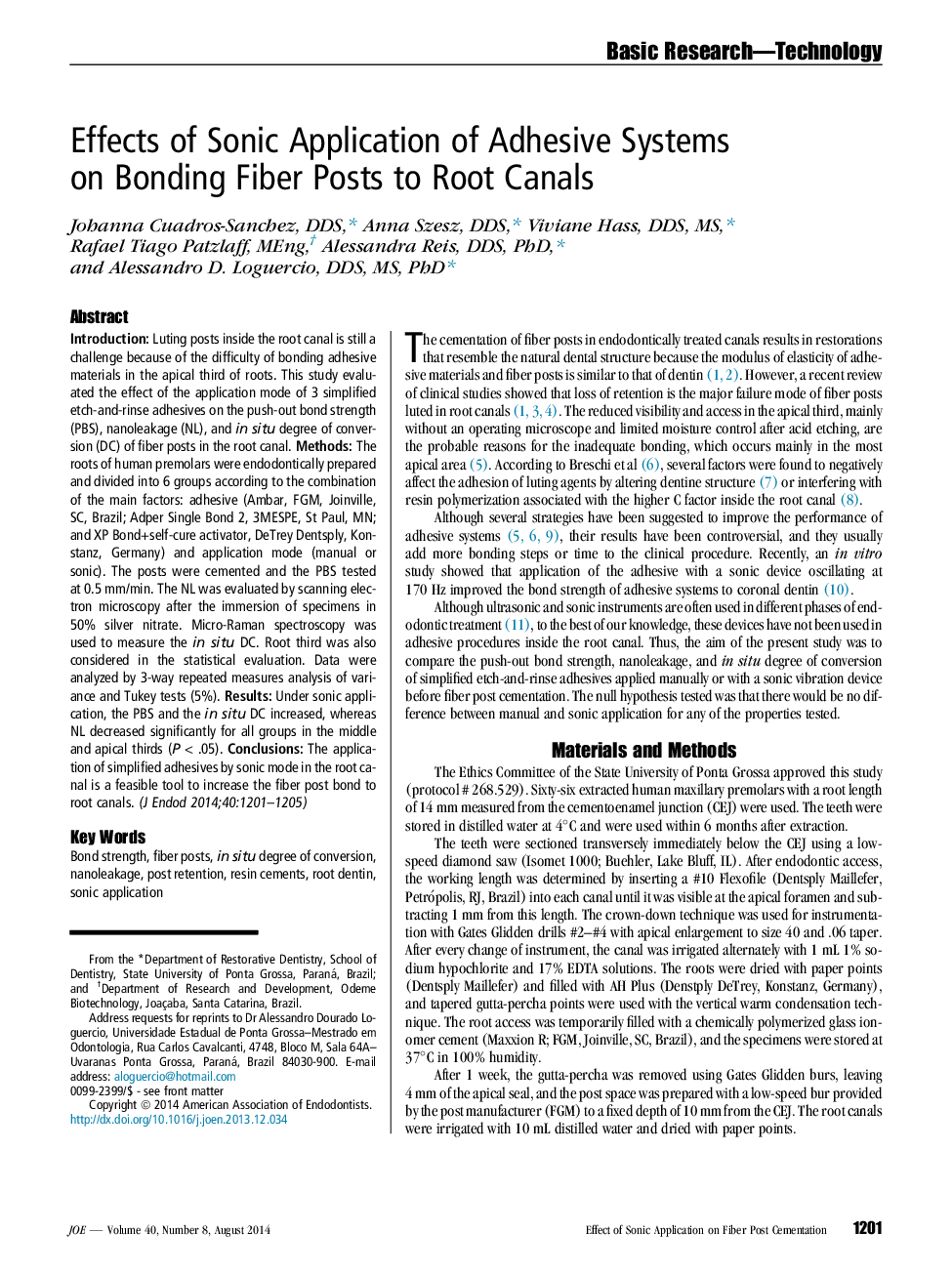| Article ID | Journal | Published Year | Pages | File Type |
|---|---|---|---|---|
| 3146750 | Journal of Endodontics | 2014 | 5 Pages |
IntroductionLuting posts inside the root canal is still a challenge because of the difficulty of bonding adhesive materials in the apical third of roots. This study evaluated the effect of the application mode of 3 simplified etch-and-rinse adhesives on the push-out bond strength (PBS), nanoleakage (NL), and in situ degree of conversion (DC) of fiber posts in the root canal.MethodsThe roots of human premolars were endodontically prepared and divided into 6 groups according to the combination of the main factors: adhesive (Ambar, FGM, Joinville, SC, Brazil; Adper Single Bond 2, 3MESPE, St Paul, MN; and XP Bond+self-cure activator, DeTrey Dentsply, Konstanz, Germany) and application mode (manual or sonic). The posts were cemented and the PBS tested at 0.5 mm/min. The NL was evaluated by scanning electron microscopy after the immersion of specimens in 50% silver nitrate. Micro-Raman spectroscopy was used to measure the in situ DC. Root third was also considered in the statistical evaluation. Data were analyzed by 3-way repeated measures analysis of variance and Tukey tests (5%).ResultsUnder sonic application, the PBS and the in situ DC increased, whereas NL decreased significantly for all groups in the middle and apical thirds (P < .05).ConclusionsThe application of simplified adhesives by sonic mode in the root canal is a feasible tool to increase the fiber post bond to root canals.
